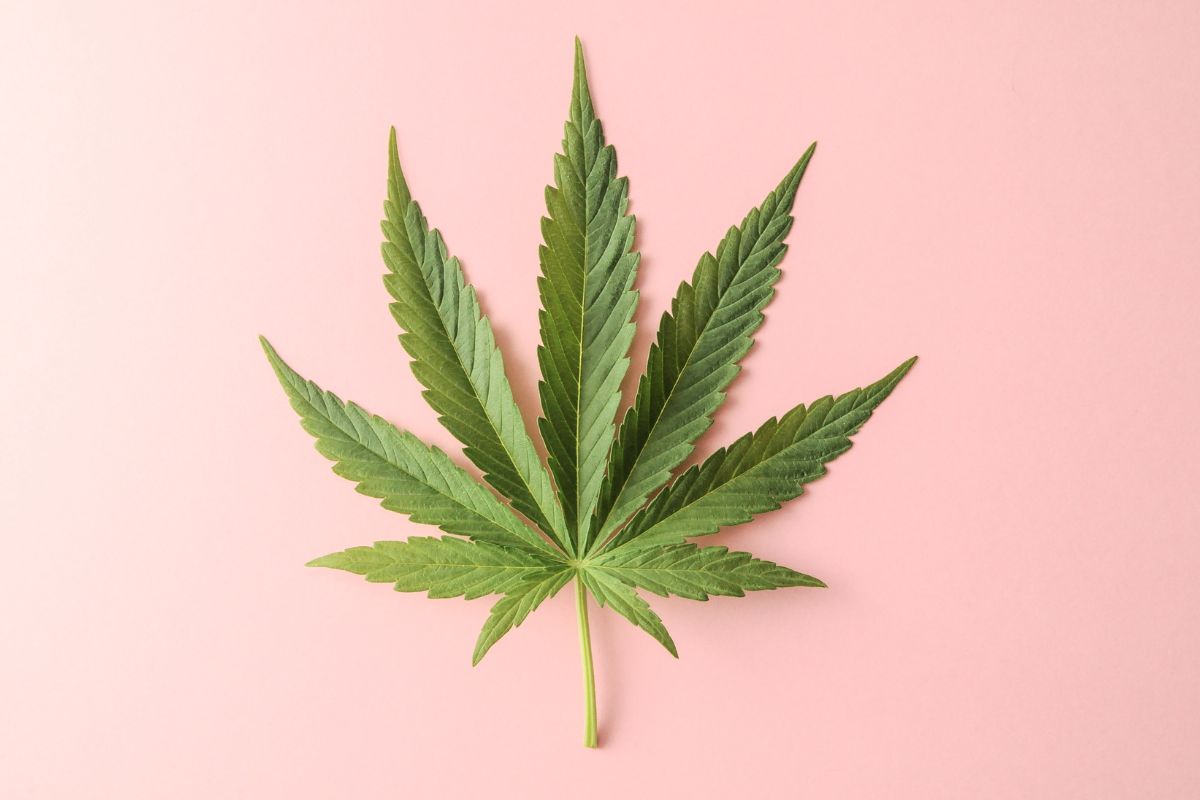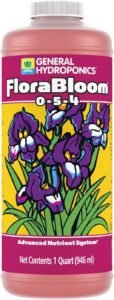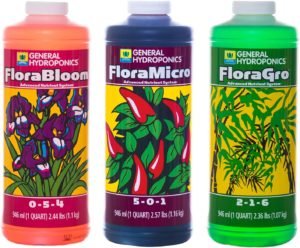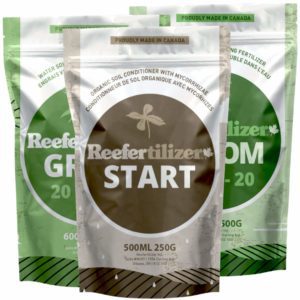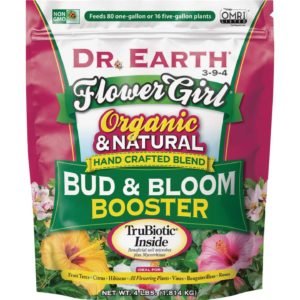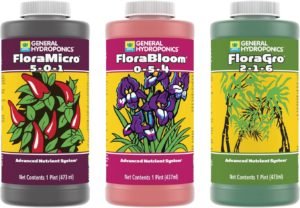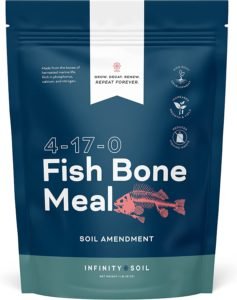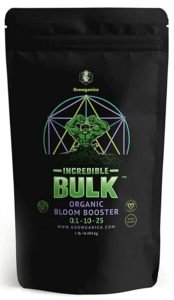In the world of cannabis cultivation, there’s a lot to know about nutrients. Which marijuana nutrients are the best? The answer is complex, so let’s get started.
Cannabis Nutrient Basics
If you follow these basics and nothing else, you’ll grow a great cannabis plant:
- Buy a multi-stage nutrient kit for growing cannabis
- Follow the instructions
And that’s it. Seriously, when it comes to marijuana nutrients, it can be easy to stop seeing the forest for the trees. Everyone wants to play scientist here, and the results aren’t always great for your marijuana plants. Nutrient burn is bad for growth and can leave a funky taste in your buds.
Of course, there’s a LOT to know about the best nutrients for cannabis. If you find that reading about nutrients is lighting up parts of your brain, you might get the most enjoyment out of a hydroponic grow setup. We’ll explain why later. For now, let’s dive into the best nutrients for cannabis cultivation.
What is the NPK Ratio?
When it comes to the elements you’ll find in fertilizer, there are three main players: Nitrogen (N), Phosphorus (P), and Potassium (K). These are the essential nutrients responsible for all plant’s healthy growth.
When it comes to fertilizers, The NPK ratio is the percentage of each of these nutrients in the liquid or package of fertilizer. For example, this bottle of General Hydroponics FloraBloom 0-5-4 is 0% Nitrogen, 5% Phosphorus, and 4% Potassium.
What does NPK do?
Nitrogen is the main player vegetative stage of cannabis growth. Nitrogen is an essential component of chlorophyll. So without it, a plant cannot photosynthesize and it won’t be able to grow. It also helps form amino acids. These go on to form proteins in a plant.
Cannabis plants use Phosphorus for energy storage, root development, and flower formation. Plants use Phosphorus as part of key metabolic processes like growing roots and flowers.
Potassium contributes to growth and stress resilience. It enables nutrients, water, and carbohydrates to move throughout cannabis plant tissue. It helps to use the proteins delivered by nitrogen.
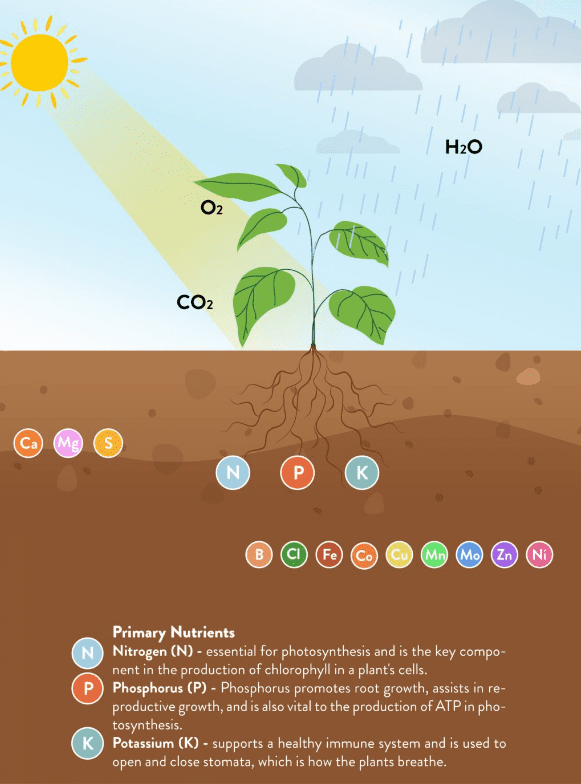
What NPK ratio is best for growing cannabis?
Cannabis plants have different ideal NPK ratios at different stages of growth. This is why most nutrient kits give you multiple fertilizers with different NPK ratios.
What are secondary nutrients?
Nitrogen, Phosphorus, and Potassium are the primary nutrients of plants. The secondary nutrients are Calcium, Magnesium, and Sulfur. These are also essential nutrients for cannabis plants, but they need them in far smaller quantities.
- Calcium helps in root development and protein synthesis.
- Magnesium helps plants turn light into energy.
- Sulfur helps plants turn amino acids into proteins.
The micronutrient content in your fertilizer should be listed somewhere on the packaging or instructions. If you look at the back of this bottle of General Hydroponics BioThrive Grow, you’ll see it’s 0.5% Magnesium, 1% Sulfur, and has no Calcium.
What are cannabis micronutrients?
These are trace nutrients your plants need. Cannabis micronutrients are iron, manganese, copper, zinc, and boron.
- Iron helps with a lot of things. These include protein synthesis and chloroplast development. It also helps with energy storage.
- Manganese is important for photosynthesis. It also helps cannabis plants absorb nitrogen.
- Copper helps with photosynthesis and plant respiration and metabolism.
- Zinc helps activate enzymes that boost chlorophyll production.
- Boron helps the plant grow stable stalks.
What is cannabis nutrient burn?
Cannabis nutrient burn occurs when there are too many nutrients for the phase of growth. Nutrient buildup is harder to correct than deficiency.
Think about it this way. If you were to go to the local drugstore and take every kind of vitamin, would you benefit from all those pills? No, you would pee out the majority of the excess vitamins you were taking. Plants don’t have kidneys, so they get damaged by taking in too much.
It’s a classic rookie mistake to give your cannabis every nutrient you can get your hands on. You can absolutely give your plants too much. The best nutrients for cannabis are balanced nutrient ratios. Less is more.
Plants that are overfed will have an oversaturated dark green color with burnt-looking edges. The cannabis plant is trying to get rid of the excess, so it’s pushing it to the edges of the leaves. As soon as you see the first signs of nutrient overload, flush your plants. You can’t heal any damage done, but you can stop more damage from occurring. Overfeeding your cannabis plants won’t kill them, but it will make your yields smaller.
Cannabis Grow Types and Nutrients
For the most part, you will be using the same basic nutrients for all grows. All the nutrients in indoor/outdoor and hydro/dirt fertilizers are similar. What changes is the nutrient delivery method. Make sure you purchase nutrients for your intended grow type.
Cannabis nutrients for hydroponic systems
In addition to the primary, secondary, and micronutrients listed, hydroponic cannabis growers sometimes add trace micronutrients, amino acids, and vitamins.
Most hydroponic kits feature liquid nutrients, like General Hydroponics FloraSeries Kit. This is because you can just mix it in with the water and flush it out as needed. Most hydroponic growth nutrients are made from synthetic mineral salts. These easily dissolve in water and do not contain organic compounds that can cause bacterial growth in your reservoir.
In decades past, you couldn’t use organic fertilizers in hydroponic grow setups. This is because your hydroponic setup is basically a nutrient soup, and harmful bacteria can easily grow in that. That said, these days there are organic nutrients that are hydro-friendly. Just be careful and don’t expose your water to light.
Nutrient Advantages of Hydroponics
Hydroponic grow setups give cannabis growers a lot more control over their nutrient levels. This is for a couple of reasons. Water has the same nutrient level in the entire reservoir, whereas dirt may not have an even nutrient distribution. Your NPK levels might be fine at the top of the soil where you are testing, but insufficient at the bottom where roots are collecting water.
It’s also much easier to adjust nutrient levels in hydro setups. If accidentally create an unideal nutrient ratio, you can easily flush it out. It’s not as easy to flush out dirt. The final flush at the end of flowering before you harvest will go much faster in water.
Last but not least, you see more immediate effects of the nutrients on your plants. It’s much easier to diagnose nutrient deficiencies and change them. If you notice signs of nutrient burn, you can readjust everything before the burn gets worse. If you like playing scientist with your plants, you’ll have more fun with hydroponics.
Cannabis nutrients for soil grows
Dirt tends to have plenty of trace elements. Most soil growers only need NPK, Calcium, and Magnesium. That said, there’s a difference between growing in potting soil vs growing in wild soil. We’ll address wild soil in the outdoor section.
Soil nutrients have a bit more options. Many of them come as liquids that you mix into your watering can before you water them. Others like Reefertilzer come as a powder that you mix into the water.
Soil growers have more organic fertilizer options than hydroponic growers. You can use things like bone meal, fish meal, and worm castings that would wreak havoc in hydro.
Cannabis nutrients for indoor growing
Indoor cannabis plants need NPK, secondary, and micro-nutrients.
Indoor vs outdoor doesn’t make as much of a difference as hydro vs dirt. It is a little bit easier to use organic fertilizer in indoor grows because they can attract pests. Pests are less of an issue indoors.
Cannabis nutrients for outdoor growing
Outdoor cannabis plants need the standard nutrients plus zinc, copper, manganese, and cobalt. You’ll also want to assess the soil you are growing in. Loamy soil is ideal to grow cannabis. This soil is a mixture of clay, silt, and sand.
Organic nutrients tend to be better for the soil in your garden. This is because organic nutrients tend to feed the living soil around the plants, rather than directly feeding the cannabis plants. This will attract more pests though.
If the soil in your garden isn’t ideal for cannabis plants, you can always use outdoor pots.
Cannabis Nutrients for Grow and Feed Stages
Cannabis plants have different nutrient requirements at every growth stage. This is why most nutrient kits come in multipacks. We’re going to use the General Hydroponics FloraGrow Kit as an example. It comes with a complete feeding schedule for the entire life cycle.
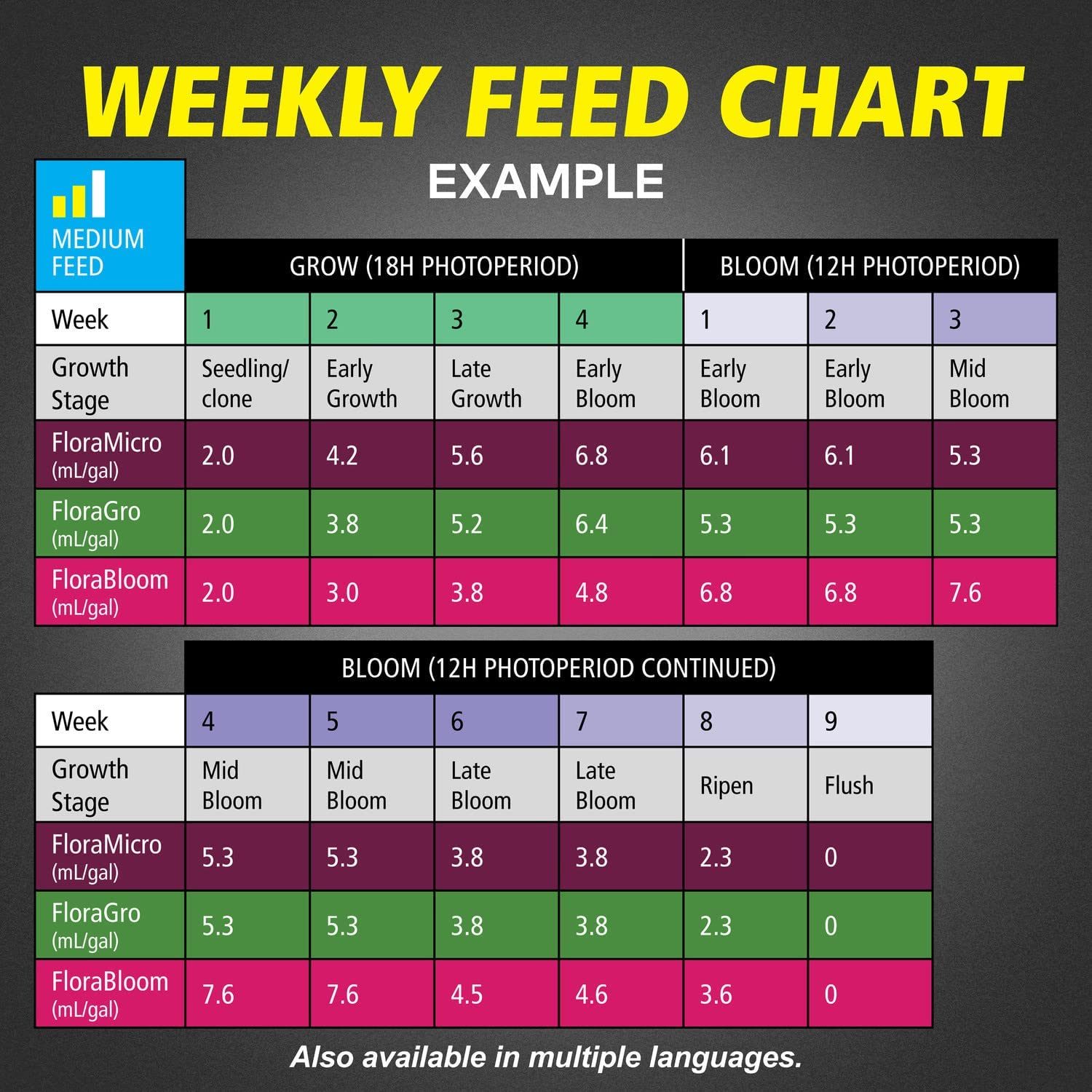
This kit has three bottles: FloraMicro which supports all stages of growth, FloraGrow which mainly supports vegetative growth, and FloraBloom which supports floral growth. Even though there are different blends, you use all three at every stage of growth in different proportions. The manufacturer gives you a chart to help you.
Now, it should be noted these are hydroponic nutrients. We’ll also offer a couple of examples of other nutrients you can use at each stage.
Seedling or Cutting Stage
At this point, what your cannabis plant needs most is sunlight and a moist growing medium.
You do not need to use very much cannabis fertilizer at this stage. In fact, some cannabis growers rely on just water and soil at this stage. The FloraGrow kit has you use a very small amount of all three bottles. In this growth phase, what’s most important is that the growing medium is kept moist. If your reservoir is underfilled, your cannabis seedlings cannot form roots.
If you feel your plants could use an organic boost, a diluted fish bone meal can add a little phosphorus to the soil.
Cannabis seedlings need light and water more than they need nutrients.
Vegetative Growth
Plants in the vegetative stage need high nitrogen, moderate potassium, and low phosphorus. The Florabloom growth chart is set for indoor growers who only want to veg for 2 weeks, if you want to veg for the standard 4 weeks, you can extend the late growth/early bloom blend for a week each.
Great options for organic fertilizers at the vegetative stage are worm castings, blood meal, fish meal, and bat guano. These all boost the nitrogen content in the soil. This is also a great time to introduce some beneficial microorganisms to the living soil. These are certain types of soil bacteria that encourage your plants to grow more roots and protect those roots.
During the vegetative stage, the cannabis plant is most susceptible to nitrogen deficiency. It’s growing the majority of its stalks and roots, so it needs as much nitrogen as it can take in. If you’re growing outdoor plants, water further away from the plant to encourage it to grow its roots
Early Bloom (Flowering)
In the first phase of flowering, the plant can stretch up to 1.5x its original size. This means it still needs high nitrogen in addition to increased potassium and phosphorus.
You don’t need to be using a bloom booster at the very first part of the flowering stage since it’s a bit more like veg part 2: stretch bugaloo. It’s more important that it still gets enough nitrogen while you begin to introduce more phosphorus and potassium.
Mid-Bloom (Flowering)
Throughout the rest of the flowering stage, cannabis plants need low nitrogen, high phosphorus, and high potassium. By mid-flowering, they also need additional calcium and magnesium.
This is usually the stage where people add a bloom booster. This usually contains extra nutrients associated with flower production. Do make sure to check what’s in your bloom booster if you add one. You don’t want to accidentally double up on something and throw your nutrient ratios off.
Late Bloom (Flowering)
During the late bloom, start tapering off the nutrients. You’ll start giving your plants more diluted nutrients so you can flush them all out at the end. If you’ve gone all-organic, flushing isn’t as important.
Flushing (Final Stages of Flowering)
This is when you give your plants plain water with no other nutrients. No matter what plant nutrients you are using, they don’t taste good to smoke.
At the end of the flowering stage, you need to flush your buds. For hydroponics, flush for one week. For dirt, flush for 2 weeks. This is the stage where people who swear by all-organic cannabis fertilizer get a leg up: organic doesn’t require as much flushing as synthetic nutrients. Some claim to be “no flush,” but we recommend flushing anyway.
Organic Versus Synthetic Cannabis Fertilizers
So which one’s better: organic or synthetic fertilizer? They both have advantages and drawbacks.
Organic cannabis growers swear it leads to the best flavor when smoked. If you’re growing directly in your garden, organic fertilizers are better for the soil. They enhance the microbial life in the living soil. That said, nutrient uptake is limited with organic fertilizer. You may experience more deficiencies using organic nutrients. They also cost more, can be more difficult to apply, are less consistent in quality, and sometimes smell bad.
Synthetic nutrients often lead to bigger yields. Cannabis plants have an easier time taking in synthetic fertilizers since they do not need to process them through the soil. If your plants may die due to deficiency, a synthetic fertilizer can save them. They’re also cheaper. However, you’re also more likely to overfeed your plants with synthetic fertilizer. They can also damage soil bacteria if you don’t flush them properly out of your soil.
Use Organic Fertilizer If:
- You’re a neurotic over-feeder
- You’re concerned about soil quality
- You want the best flavor possible
Use Synthetic Fertilizer If:
- You want the biggest possible yield
- Your plants are nutrient deficient
- You’re looking for a budget-friendly option
That said, this really isn’t an all-or-nothing type of deal. You can absolutely go mostly organic and throw in some synthetic bloom nutrients during the flowering stages.
Cannabis Nutrients Deficiencies
Here’s a quick and easy guide to help you identify a possible nutrient deficiency.
How do I know if my plants have an NPK deficiency?
- Nitrogen – leaves that look pale. As it progresses, they turn yellow and drop off. Nitrogen deficiency will overall stunt plant growth.
- Phosphorus – dark spotting on the older leaves and slowed growth.
- Potassium – plants will turn dark and look burnt at the tips and edges of the leaves. This looks a lot like nutrient overload, but that only affects the leaf tips.
How do I know if my plants have a secondary nutrient deficiency?
- Calcium – plants have stunted growth, and leaves have brown dead spots.
- Magnesium – veins and outer edges take on a light green color that fades to yellow.
- Sulfur – young leaves start to yellow in the middle which eventually spreads to the whole leaf.
How do I know if my plants have a micronutrient deficiency?
- Iron – young leaves appear yellow. Usually the result of poor pH levels or too much manganese, zinc, or copper.
- Manganese – new leaves will be yellow around the veins, and dead spots will appear. Eventually, this spreads to older leaves. Usually caused by iron excess or high pH.
- Copper – new growth appears wilted. Rare deficiency.
- Zinc – leaves turn sideways at a 90-degree angle. This is a common deficiency when growing in alkaline soil and arid climates.
- Boron – new foliage appears twisted and burnt
FAQs about Cannabis Nutrients
What’s the easiest way to give my plants the best cannabis nutrients?
The easiest way to get cannabis nutrients right is to buy a set and follow the instructions. There is a lot to know about nutrients, but don’t need to know it all yourself.
Can I use organic nutrients in a hydroponic setup?
Yes, but make sure they’re designed for hydroponics. Also, be sure to monitor your reservoirs, sometimes things can grow on your air pump.
Are organic fertilizers better for marijuana plants?
Both organic and synthetic fertilizers have pros and cons. Organic is better for your soil and you’re less likely to overfeed your plants. Synthetic fertilizers give bigger yields and are usually cheaper and easier to use.
Which is worse, nutrient deficiency or nutrient burn?
They are both bad, but nutrient deficiency is much easier to correct. It is always easier to add nutrients than it is to take them away. If you notice burn, flush your weed plant ASAP.
More about cannabis
- How To Treat A Magnesium Deficiency In Cannabis
- It’s Not O-K: Potassium Deficiency in Cannabis
- How to harvest cannabis (and use the entire plant)
- Male Weed Plant Stages: Don’t Ruin Your Crop
- How To Decarb Weed For Homemade Cannabis Products
- Loving the Ladies: Female Weed Plant Stages
- Patience is a Virtue: Curing Buds for Best Taste
- Understanding weed light cycles: Get the most from your harvest
- When to switch to flower nutrients for high cannabis yield
- How to make live resin at home, step-by-step

